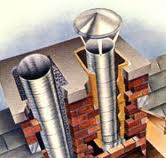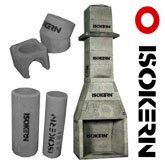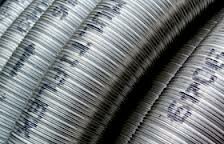WHY DO FLUES LEAK?
Depending upon the type of fuel being burnt, the problem could be one associated with condensation. Does the flue have the correct cross-sectional area?-in general solid fuels require a larger flue area than others due to production of a higher volume of gasses and higher gas temperature. A flue used to evacuate solid fuel gasses is exposed to temperatures that will affect the jointing as well as the surface of the flue that will eventually result in leakage.
The speed of this deterioration is, of course, dependant upon the material used for flue construction – regular cement lime mortar is particularly liable to suffer from “acid attack”.
Another factor is the build up of tars and creosotes, if not regularly removed by sweeping, that will cause soot/chimney fires, a truly devastating event that can go by totally unnoticed (if you are lucky!!) or result in considerable damage to your property. In any event, it usually leaves you with a leaking chimney.
Liquid fuels burn at much lower temperatures in the flue, but they do deposit a considerable amount of moist and often acidic residues in the chimney (i.e.condensation). It appears that, because the products of combustion cool down before they have left the flue a dew point is reached within, resulting in acidic condensates running back down the inside of the flue. This causes damage to the flue jointing, appliances and decor.
There are, of course, numerous alternative reasons for a leaking flue other than those associated with the operation of appliances for any period of time, e.g. improper construction (flues badly jointed, upside down liners, obstructions creating flue gas turbulence etc.).
In summary:
Age / Usage of fuels that “attack” mortar.
Chimneys where flue gas temperatures reach “dew point”
– either through excessive x-sectional area or external flues lacking insulation.
Improper construction – either creating flue gas turbulence / missing or
excessive parging / jointing.
Modular flue systems incorrectly installed (commonly seen with gas
flue block or clay liner).
In the case of Sootfire damage


